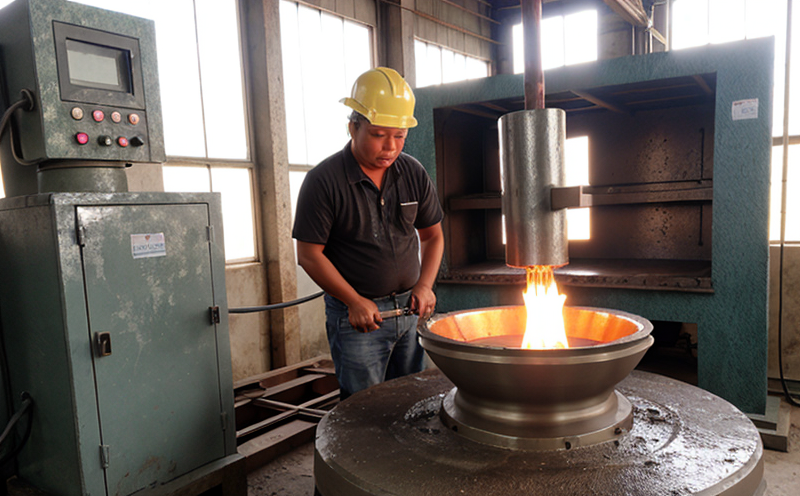ISO 8066 Inclusion Content Testing of Cast Materials
The International Organization for Standardization (ISO) has established ISO 8066 as a critical standard for the determination of inclusion content in cast iron and steel products. This test ensures that the quality and performance of these materials meet stringent international standards, which is essential for industries reliant on robust casting processes such as automotive, aerospace, construction, and manufacturing sectors.
The process involves several key steps: sampling, sample preparation, and analysis using advanced spectroscopy techniques like X-ray fluorescence (XRF), scanning electron microscopy (SEM), and energy-dispersive X-ray spectrometry (EDX). These methods provide precise measurements of various inclusions such as oxides, sulfides, silicates, and other non-metallic elements that can affect the mechanical properties of cast materials.
Sampling is critical to ensure representativeness. Typically, samples are taken from multiple locations within a batch or casting to capture a full spectrum of inclusion content. Sample preparation involves cutting, grinding, and polishing the sample to expose internal structures without altering the composition. Once prepared, these specimens undergo non-destructive testing using advanced instrumentation that can accurately detect even trace amounts of inclusions.
The test parameters are defined by ISO 8066, which specifies detailed procedures for sampling, preparation, and analysis. Acceptance criteria are set to ensure that products meet or exceed the specified limits for inclusion content. This helps manufacturers maintain consistent quality across production batches and ensures compliance with international standards.
Real-world applications of this test include identifying potential issues in casting processes early, optimizing alloy compositions to minimize harmful inclusions, ensuring product reliability, and meeting regulatory requirements. By adhering to ISO 8066, companies can enhance their reputation for quality and build trust with customers who demand high standards.
For industries like automotive where the strength and integrity of cast parts are paramount, accurate inclusion content testing is not just a compliance issue but also a safety concern. In aerospace applications, even small inclusions can lead to catastrophic failures, making this test indispensable.
- Quality and Reliability Assurance: Ensures consistent product quality across batches and production runs.
- Competitive Advantage and Market Impact: Establishes a benchmark of excellence that differentiates compliant products in the market.





